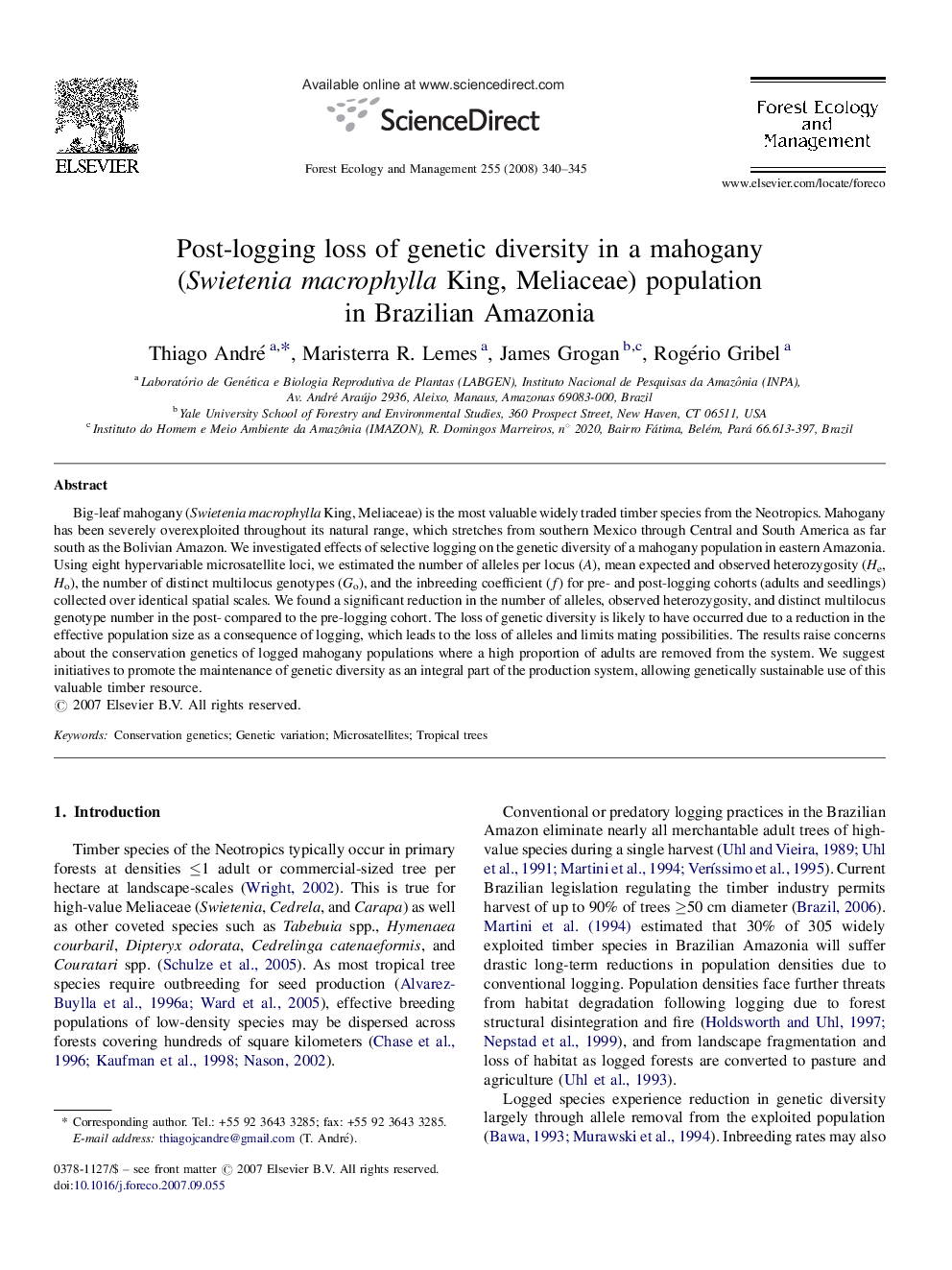| کد مقاله | کد نشریه | سال انتشار | مقاله انگلیسی | نسخه تمام متن |
|---|---|---|---|---|
| 89786 | 159356 | 2008 | 6 صفحه PDF | دانلود رایگان |

Big-leaf mahogany (Swietenia macrophylla King, Meliaceae) is the most valuable widely traded timber species from the Neotropics. Mahogany has been severely overexploited throughout its natural range, which stretches from southern Mexico through Central and South America as far south as the Bolivian Amazon. We investigated effects of selective logging on the genetic diversity of a mahogany population in eastern Amazonia. Using eight hypervariable microsatellite loci, we estimated the number of alleles per locus (A), mean expected and observed heterozygosity (He, Ho), the number of distinct multilocus genotypes (Go), and the inbreeding coefficient (f) for pre- and post-logging cohorts (adults and seedlings) collected over identical spatial scales. We found a significant reduction in the number of alleles, observed heterozygosity, and distinct multilocus genotype number in the post- compared to the pre-logging cohort. The loss of genetic diversity is likely to have occurred due to a reduction in the effective population size as a consequence of logging, which leads to the loss of alleles and limits mating possibilities. The results raise concerns about the conservation genetics of logged mahogany populations where a high proportion of adults are removed from the system. We suggest initiatives to promote the maintenance of genetic diversity as an integral part of the production system, allowing genetically sustainable use of this valuable timber resource.
Journal: Forest Ecology and Management - Volume 255, Issue 2, 10 March 2008, Pages 340–345